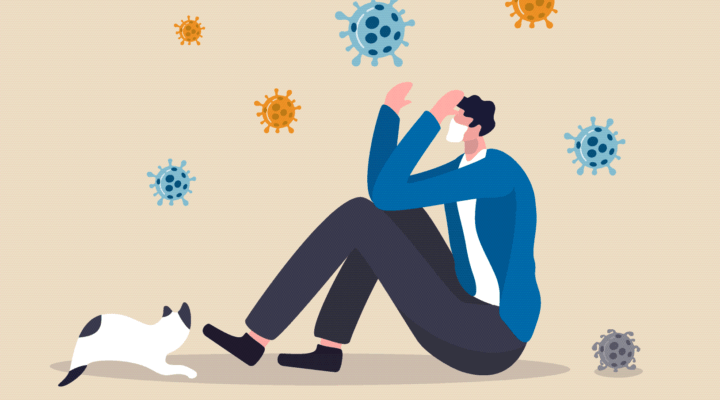In the wake of COVID-19, some individuals who are diagnosed with “long COVID” are experiencing the reality of disability as they face symptoms that restrict their ability to move through life without limitations.
President Joe Biden announced that many of these individuals, sometimes referred to as “long-haulers,” will be protected under the Americans with Disability Act. This new ADA qualification will grant people with long COVID access to federal disability services and accommodations on a case-by-case basis.
While most people who survive COVID-19 feel better within a few weeks, a growing number of individuals report lingering symptoms, such as extreme fatigue, brain fog, shortness of breath, dizziness, heart palpitations or chest pain. These symptoms and others may severely limit a person’s ability to care for herself or perform manual tasks.
One study indicates nearly 25% of people infected with the virus have one or more lingering health problems more than four weeks after their diagnosis. The study shows that long COVID does not discriminate against people based on their age, as many previously young and healthy individuals are affected by long COVID. Even some people who were asymptomatic after testing positive are now experiencing disabling symptoms.
Disabled by COVID
“Because of COVID, we’re seeing hundreds of thousands of people being disabled,” said clergywoman Corrie Hermans-Webster, who still struggles with COVID-related symptoms nearly a year and a half after her initial diagnosis.
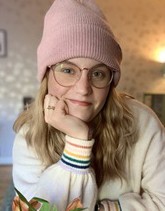
Corrie Hermans-Webster
Before the pandemic, Hermans-Webster identified as disabled due to several invisible disabilities, and she explained, “I was further disabled by COVID-19.”
Hermans-Webster was infected with the virus so early in the pandemic that doctors were not convinced that someone so young — 28 at the time — could get so sick from the disease. From the beginning, she had to advocate for herself to her doctors, particularly when her symptoms did not subside quickly.
She was very active before the diagnosis, walking multiple miles a day and going to boxing classes. But since initial infection with the virus, Hermans-Webster has been severely fatigued. She was unable to walk one mile on a flat surface until a year after infection.
Among other symptoms, she experiences phantom smells, new food intolerances and intense brain fog. “I’ll completely forget what I’m saying … . Words just completely disappear and fail me. I’ll forget words that I used to know that are very commonly used words,” she said. “These symptoms that I’ve developed are similar to early symptoms we see in dementia patients.”
As a long-hauler, Hermans-Webster had to find a new job because she no longer was physically able to work at her previous position. She was employed by a church where the senior pastor was incapable of grasping or accepting the effects of her medical condition. She consistently had to explain to an increasingly impatient pastor that she was physically unable to complete some tasks that she used to be able to do.
Searching for answers
Due to the novelty of long COVID, some symptoms are inexplicable, and diagnoses are elusive even to doctors and experts. For this reason, many long-haulers are active on online forums, as they look for answers in a community of people with similar symptoms.
Hermans-Webster diagnosed herself with Postural Orthostatic Tachycardia Syndrome — a condition affecting the heart and nervous system — from an article in the Atlantic before finding a doctor who officially confirmed the diagnosis. POTS, which is becoming more common particularly among women who previously had COVID-19, can severely limit a person’s ability to perform common activities.
The connection between illness and disability is not a new one.
The connection between illness and disability is not a new one. Devan Stahl, assistant professor of religion at Baylor University, explained, “There was a time when a lot of people wanted to have a really sharp line between illness and disability. Somebody who is blind or deaf is not sick. However, the problem is that most disabilities are acquired through illness, which is what we are going to see with long-haul COVID.”
Illness vs. disability
There is an emphasis in the disability community to embrace and celebrate disability, including disabilities acquired from illness. However, this pride is less common among people with fatal conditions. “Embracing an illness or disability is not helpful when the outcome is death,” Stahl said.
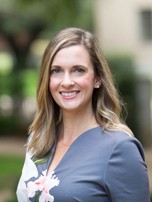
Devan Stahl
Because of this distinction, sometimes illness and disability are viewed as two markedly different categories. But according to Stahl, “If you picture a Venn diagram between illness and disability, there is a big overlap.” Both are “inherent to our human condition … . They are our universal experience. If you live long enough you will get sick, and you will get a disability.”
Stahl is not threatened by this reality. “There is something good about the kinds of bodies that we have. They are finite, and they are vulnerable. But there’s a reason not to see them as a negative thing. If (it was negative), Jesus would not have taken up this body.”
Stahl, who lives with multiple sclerosis, identifies as disabled. After her diagnosis, she realized neither the church nor her theology courses in seminary equipped her to process her disability. She began reading about disability theology, which helped her notice the ways churches often position disability as a moral failing.
“There was the insinuation that I wouldn’t be disabled if we didn’t live in a fallen world,” she said. “I wasn’t being blamed personally for my disability, but I was the symbol of the fallen world we live in.”
A reminder of life’s fragility
This insinuation did not fit with the attitude of people she knew who were proud of their disabilities. The cultural value of the “ideal human” was not fed by solid theological evidence. Rather, “People with obvious disabilities remind us all that we all are really fragile. If being independent and working and being intelligent and strong is the goal, then they don’t include disability. And disability is a challenge to those things.”
“Disability is one of the only minority groups that you can wake up one day and find yourself a part of.”
Stahl noted, “Disability is one of the only minority groups that you can wake up one day and find yourself a part of, which is really scary.” Waking up with a disability is indicative of the experience of long-haulers who continue to experience serious symptoms months after initially testing positive for COVID-19.
In the United States alone, 36 million cases of COVID-19 have been documented. If nearly one-fourth of people who contract the virus later are diagnosed with long COVID, then almost 9 million people could wake up in this minority group because of new or lingering disabilities.
A call to awareness in the church
With COVID-19 disabling more people, it is likely that there will be more parishioners who identify as disabled and might need new levels of accessibility back into the church.
In this time of imagining what the future of the church in a post-COVID world should look like, disability advocates say it is imperative to consider how long COVID will affect congregants — and to reconsider the ways congregations already are helping or harming people with various kinds of disabilities through theology and accessibility.
This is another time for the church to grapple with the reality that the Christian community has not always been a safe or welcoming place for people with disabilities.
Two theologies of suffering
Michelle Eastman, a master of divinity student at Boston University, recalls her experiences in the church as a person born with the congenital disability Cerebral Palsy.
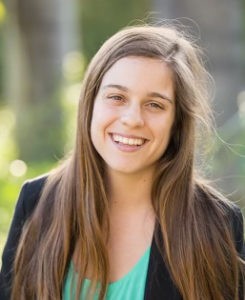
Michelle Eastman
Growing up in a Baptist megachurch, Eastman felt like her disability was spiritually exalted because of its connection to suffering. “My suffering was glorified as something that made me closer to God because of my disability … . That’s something that’s alive in the Baptist church — the idea that suffering is something that is to your benefit if you can handle it.”
“As an 8-year-old, it’s a lot to be asked to see your suffering as a good thing. It kind of short-circuited my grief process because my grief was put on a pedestal as an example to the adults in my church. For that reason, I was asked to speak in a variety of places. I realized later on that it made me ignore both the beauty and the hardship that disability embodies and carries.”
Eastman later joined an international mission organization in the South Pacific for three years where she was exposed to charismatic theology within the Pentecostal movement.
In the Baptist setting, Eastman frequently was asked to pray on the behalf of other people because of her connection to God. In the Pentecostal setting, people frequently asked to pray for healing for her because of her disability.
She would tell them that she didn’t need prayer. “But their persistence indicated that something about my body is wrong, and I needed to be healed. I was told, ‘It just takes faith.’ So in the moments where I wasn’t healed, the blame was put on me. The sin in my life was why I wasn’t healed … which led me to believe it was my fault.”
People seldom listened when she said she didn’t need prayer for healing. “People acted like God wanted to eradicate disability,” she said. “They rarely asked about my life or my pain and sometimes neglected to ask my name. Their assumptions led (me) to (feel) ashamed to exist in my body as a disabled person.”
“I went from being told to be grateful for my disability to being told to be resentful of my body, and both were in the name of Jesus’ love and the gospel.”
The message was clear: “Neither society nor God desire disability.”
Eastman was told two distinct theologies about her disability, and the contrasting assumptions were not easy to navigate.
“My disability went from why I was close to God to why I was far away from God. Suddenly, God didn’t love or accept me the way I was because of my disability. I went from being told to be grateful for my disability to being told to be resentful of my body, and both were in the name of Jesus’ love and the gospel. In both traditions, people hardly listened to my own narrative about my body.”
Beliefs dictated by others
Whether holy or shameful, Eastman was dictated what to think and feel about her disability by other people instead of being allowed to come to her own theological conclusions.
Eastman, however, is grateful she grew up in these environments because they forced her to question how God views disability. “It led me to ask the important questions and led me to seminary … . It made me want to do this for the rest of my life and discover the truth of the gospel is that God really loves disability.”
Today Eastman follows a Jesus who is comfortable with his bodily vulnerability. “I am following a God who is comfortable with uprooting a system that has rejected people like me for centuries, and I’m comfortable with a God who has wounds and who decided to show up that way. I’m sitting in a resurrected reality of a God who celebrates and grieves with a disability… . (This) helps me love my body fully … and that is good news for me. The good news of the gospel.”
Whether holy or shameful, Eastman was dictated what to think and feel about her disability by other people instead of being allowed to come to her own theological conclusions.
Eastman has hope for a future church that preaches this kind of gospel, and she challenges the church to be a place of true liberation for all bodies. “If the church is to be a place of liberation and refuge for people with disabilities, then it must be a place that is comfortable with me not wanting to be cured. It must be a place that finds wholeness in imperfection and brokenness. A brokenness that isn’t more holy or more shameful but is honestly human.”
No return to ‘normal’
If this last year and a half has demonstrated anything, it is the vulnerability of bodies. Those who live with disabilities hope the church might learn something about fragility and imagine a future that creates a place of inclusion and liberation for all bodies.
And “returning to normal” is not the right answer. “My biggest fear is that the churches are now saying, ‘That’s over, let’s go back to normal,’” said Hermans-Webster.
She celebrates the accessibility given to many people through virtual church services. As more people are vaccinated and more communities are able to commence in-person activities, she urges pastors to consider how their churches can continue to make accommodations and keep virtual options available for people who need them.
Disabled people have been requesting accommodations like working from home for years.
Hermans-Webster notes that disabled people have been requesting accommodations like working from home for years. They were denied these requests before COVID-19 sent almost everyone into a virtual working space. The pandemic demonstrates that these accommodations are possible, and she hopes they don’t disappear when the pandemic ends.
“We’ve also seen a larger conversation about mental illness during the pandemic and the support of people needing to do what’s best for them,” she said. “I wish people would use that same kind of reasoning and care and support for different kinds of disabilities as well. The church is really quick to dismiss little things that greatly affect disabled people.”
Thinking about providing accessibility in this time of transition could include physical access to space, large-print bulletins and hymnals, better audio systems or better theology.
Hermans-Webster encourages churches that are unsure of how to be more inclusive to disabled people to simply ask. “Think about if you’re cooking a meal for someone. You’d ask if they had any allergies before you cooked something … . You wouldn’t just make a peanut pie. You would listen and cook something based on their needs.
Accessibility is about a conversation, not just a ramp
“Have these conversations with everyone about what people need,” she said. “Everyone needs something. That’s how society exists. Disabled bodies typically might need more, but everyone needs something. We shouldn’t view someone as a burden for needing more accommodations than others.”
Eastman agrees that physical access to church buildings and services is important. But she also noted that accessibility “is not just about having a ramp in the building. It’s about whether people with a disability feel safe and welcome in your community.”
“At the end of the day, we’re asking the church if it’s comfortable with the idea of frailty and imperfection and pain — and if not, then disability becomes the thing we heal, fix or ignore. But disability asks us to embrace our own fragility and eventually death … . If the church can embrace what it fears the most, then people with disabilities might begin to come to church.”
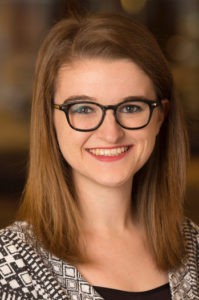
Laura Ellis
Laura Ellis currently serves as a Clemons Fellow with BNG. She recently graduated from Boston University School of Theology with a master of divinity degree. She is originally from Abilene, Texas.
Related articles:
As Americans with Disabilities Act turns 30, barriers remain

